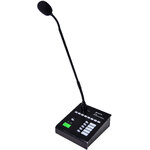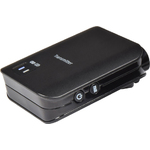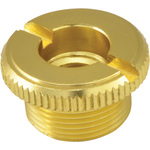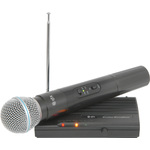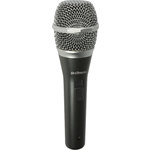Dynamic vs condenser microphones
The way that a microphones picks up sound determines how useful the resulting audio output is for different applications. There are 2 main types of capsule used in microphones – dynamic and condenser.
Dynamic microphones

A dynamic microphone is so-called because it operates like an electrical dynamo, where the vibrations are received onto a diaphragm which has a coil attached to it, which is in close proximity with a powerful magnet.
The vibrations move the coil through the magnetic field and this causes a current to flow within the coil, which is delivered as the audio output.
In general dynamic mics are more rugged than condensers, making them more suitable for on-stage use. They can handle high sound pressure levels for example powerful vocals or snare drum hits and they usually have a built in shock mount to reduce handling noise.
Their polar patterns are designed to pick up sound close to and in front of the mic whilst not picking up sound from further a field, for example sounds from other vocals or instruments nearby. This design also reduces the tendency to feedback (howl or high pitched whistle).
Pros :
- Simple, robust design
- No power supply required
- Relatively low cost
Cons :
- Lower sensitivity
- Limited frequency response
- Variable tone colouration
Condenser microphones

A condenser microphone is so-called because it uses a capacitor, otherwise known as a condenser, to transform sound into an audio signal. The capacitor is a pair of fine electrical plates, separated by an insulating layer with a charge applied to one of the plates.
As sound waves hit the condenser capsule, the plates vibrate and the distance between them is very slightly varied, allowing charge to leak over from one plate to the other, providing an electrical replica of the sound vibrations, which is then boosted by an internal preamp before being delivered as an audio output.
Condensers are more sensitive and more suited to studio work. Some however, are designed for live work, for example, some can be used as overheads for choirs, pianos, drums etc.
Condensers will pick up the subtleties from vocal and instrumental performance that can sometimes be missed by a dynamic mic. Proximity effect is more pronounced in condenser microphones; it increases the response of bass frequencies as you get closer to the mic and is a benefit used by singers and engineers to colour their sound.
These microphones require a power source, either from a battery or phantom power supplied from the desk or preamp. Ensure you have a phantom power source if considering a condenser microphone without its own battery power.
Pros :
- High sensitivity
- Wide frequency response
- Minimal sound colouration
Cons :
- Requires power supply (phantom, battery or USB)
- Prone to damage by impact
- Relatively high cost


